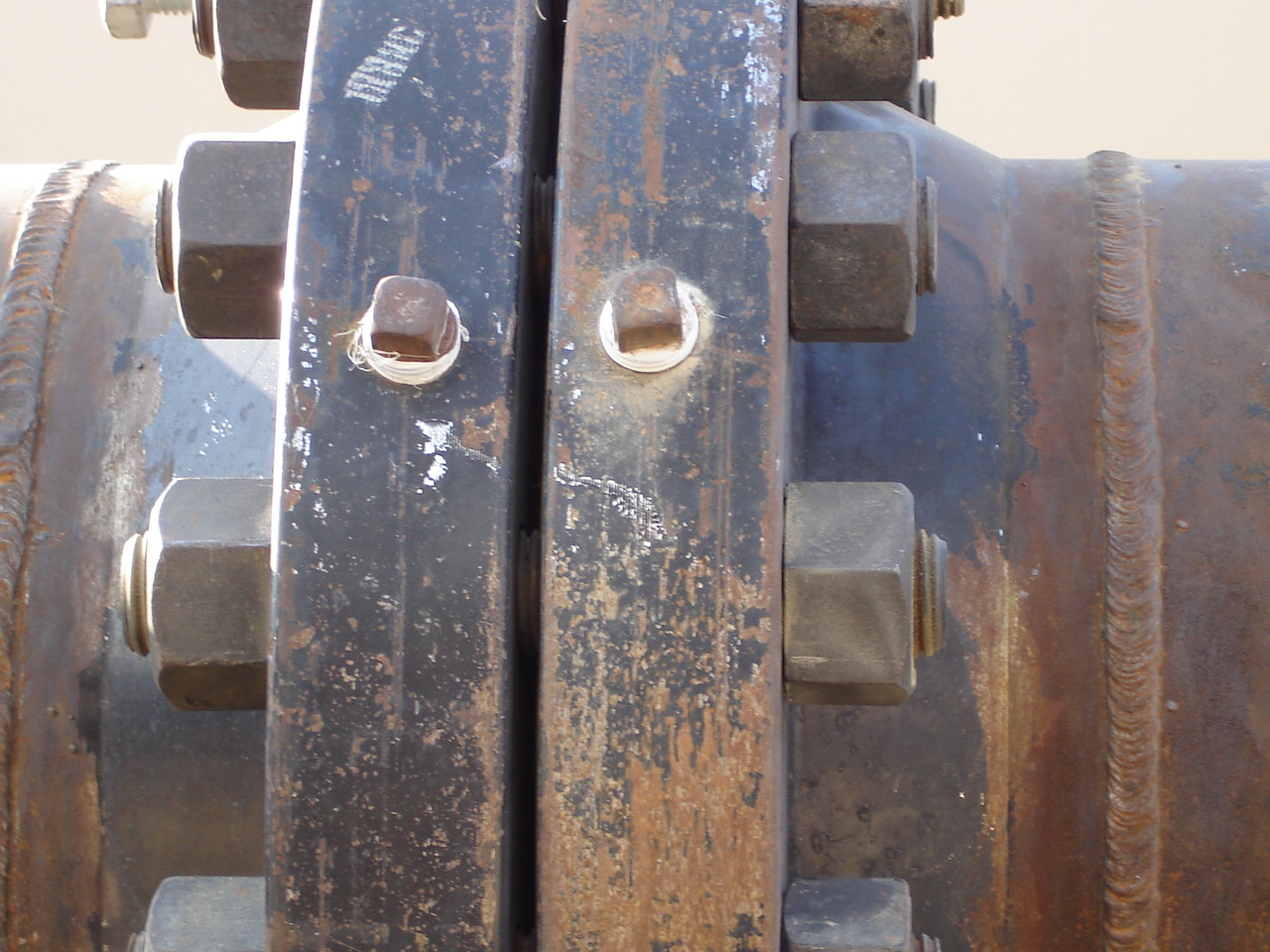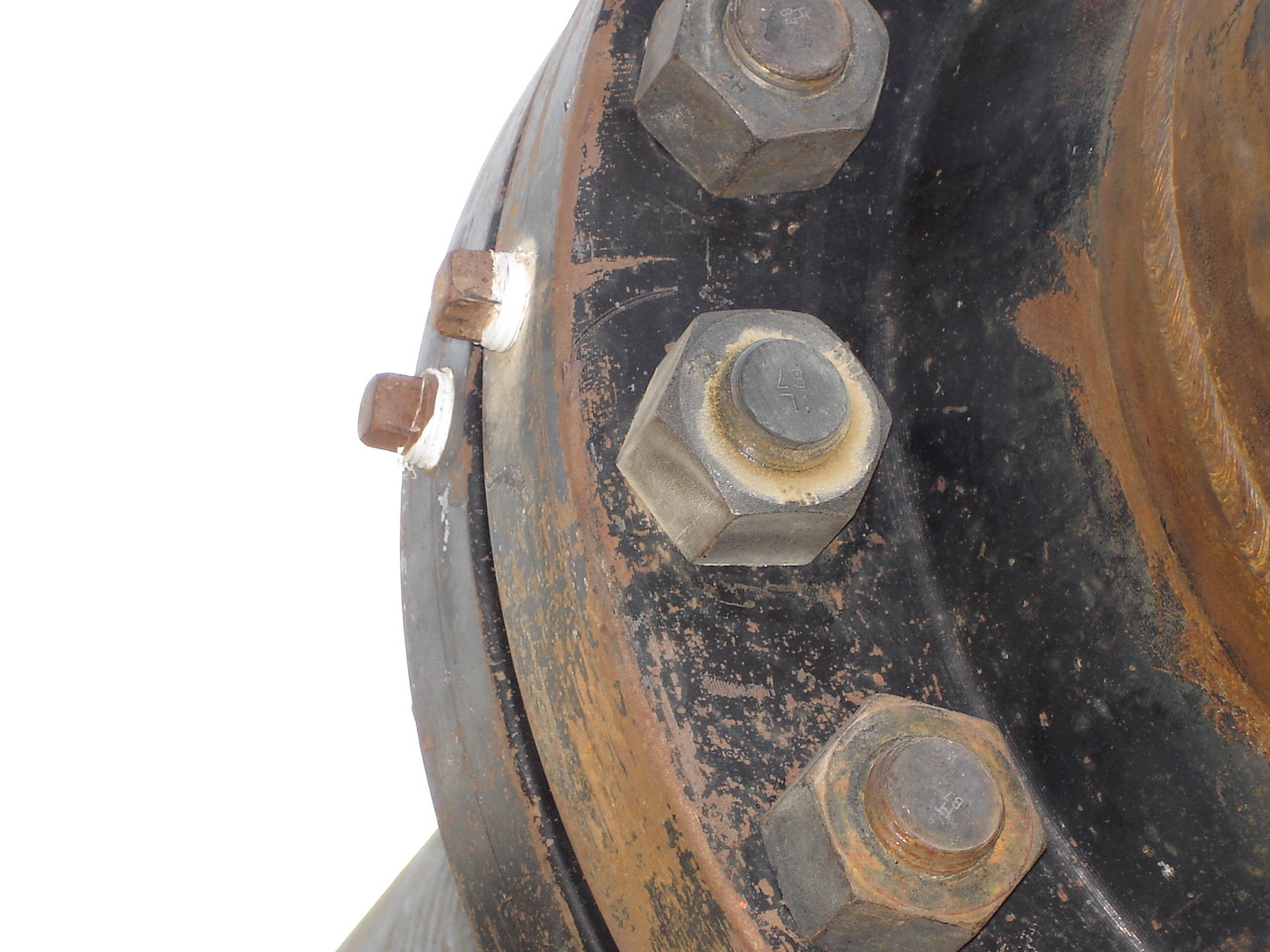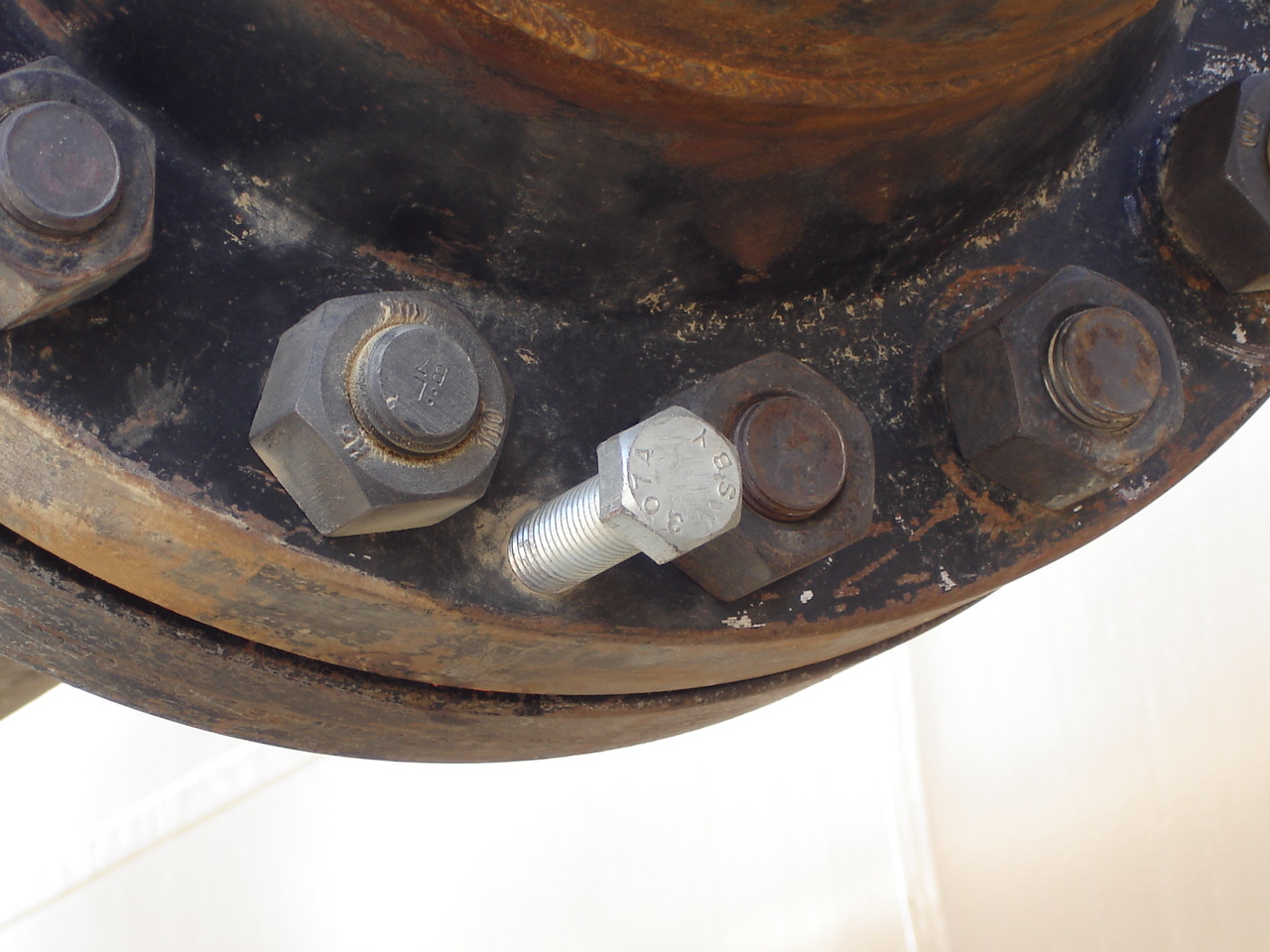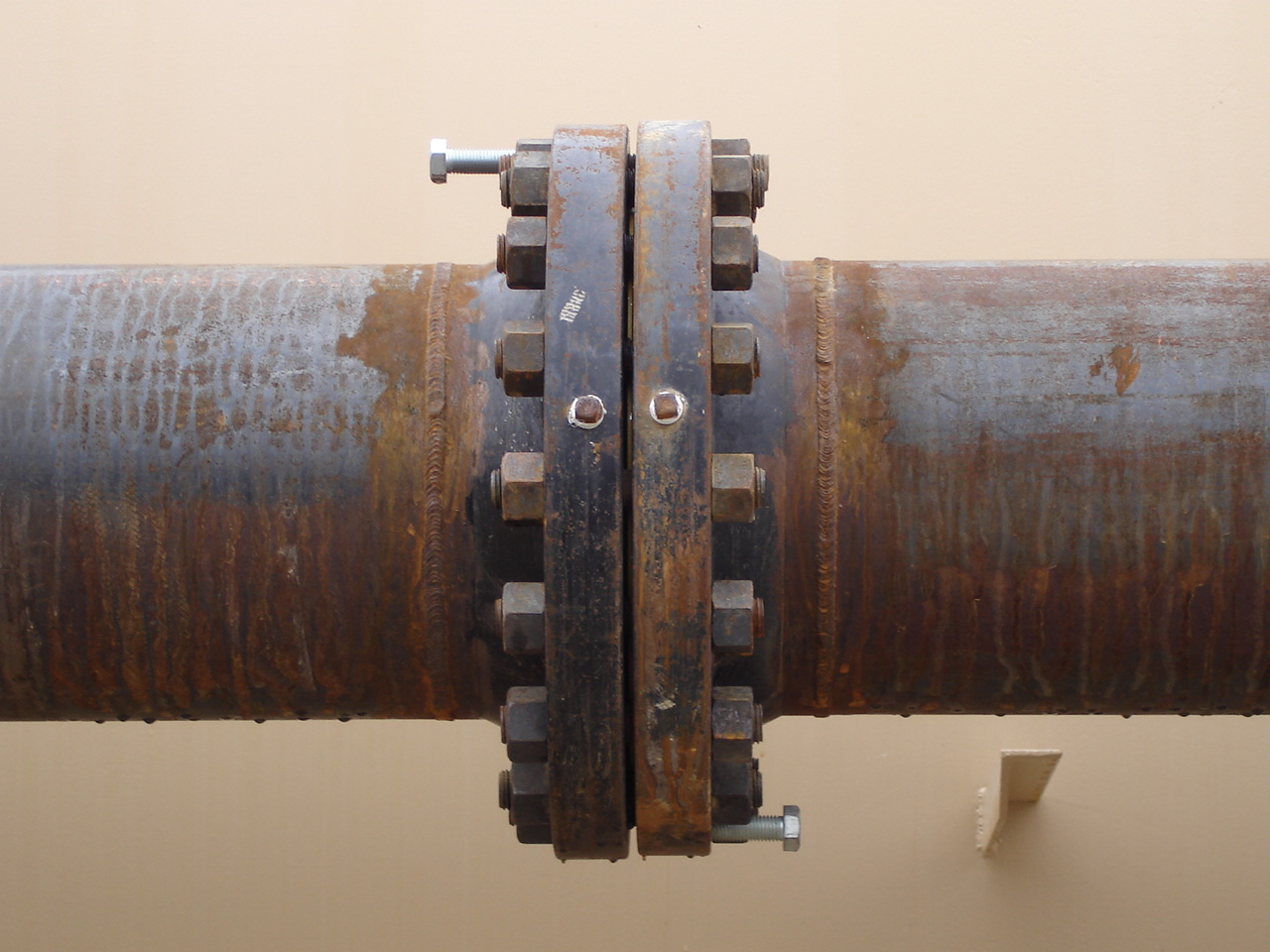Orifice Flange
Orifice Flange and Plate Datasheets | |||
|---|---|---|---|
| Class | Orifice Flange Raised Face | Class | Orifice Plate Raised or Flat Face |
| ANSI 300 | Orifice WNF, ANSI Class 300 (in) | ANSI 125 - 2500 | Orifice Plate - ANSI Class 125-2500 (in) |
| ANSI 400 | Orifice WNF, ANSI Class 400 (in) | ||
| ANSI 600 | Orifice WNF, ANSI Class 600 (in) | ||
| ANSI 900 | Orifice WNF, ANSI Class 900 (in) | ||
| ANSI 1500 | Orifice WNF, ANSI Class 1500 (in) | ||
| ANSI 2500 | Orifice WNF, ANSI Class 2500 (in) | ||
 Orifice flanges, abbreviated as ORFF, are for metering the volumetric flow rate of liquids and gasses through a pipe. Two orifice flanges are called an orifice flange union. Each flange comes with two pipe taps for measuring the pressure drop of the flow through an orifice plate. Orifice plates do not come with the flanges and are sized based on the requirements of the process. Two jack screws are used to spread the flanges apart in order to change the orifice plate. This flange is normally available in weld neck, slip-on, and threaded flanges. These flanges have a raised face.
Orifice flanges, abbreviated as ORFF, are for metering the volumetric flow rate of liquids and gasses through a pipe. Two orifice flanges are called an orifice flange union. Each flange comes with two pipe taps for measuring the pressure drop of the flow through an orifice plate. Orifice plates do not come with the flanges and are sized based on the requirements of the process. Two jack screws are used to spread the flanges apart in order to change the orifice plate. This flange is normally available in weld neck, slip-on, and threaded flanges. These flanges have a raised face.
Orifice flanges are installed in a straight run of pipe in order to avoid turbulence at the plate. As a rule of thumb, an orifice flange has ten diameters of straight pipe upstream and five diameters of pipe downstream. There are guidelines set out in (American Gas Association) AGA Report #3 which is the Orifice Metering of Natural gas.
When installing the orifice plate flange the pressure taps need to be at the same elevation to each other. The assumption when making the calculation for the orifice plate is that static head of the tubes is the same on both sides of the orifice plate. Pressure taps should not be installed facing down as the taps could become plugged with debris in the line.
Weldneck orifice flanges are butt-welded into the pipeline. The inside diameter (bore diameter) of the pipe should be specified when ordering. Weldneck orifice flanges are available in ANSI classes 300, 600, 900, 1500 and 2500. They are not available in ANSI 150 sizes because the thickness of ANSI 150 flanges are not enough to allow for drilling pressure taps.
Orifice Flange Standards
- ASME B16.36 - Orifice Flanges
- Slip-on Flange: Class 300, Class 400, Class 600, Class 900, Class 1500
- Threaded Flange: Class 300, Class 400, Class 600, Class 900, Class 1500
- Weld Neck Flange: Class 300, Class 400, Class 600, Class 900, Class 1500, Class 2500





